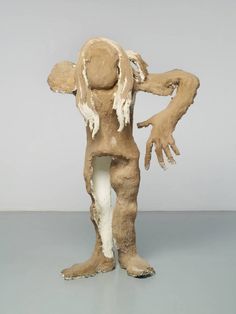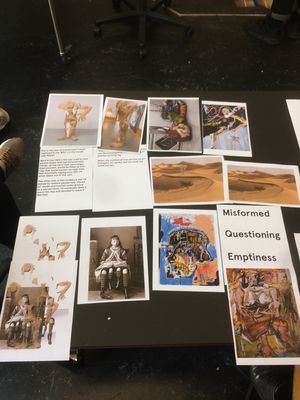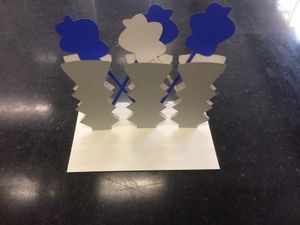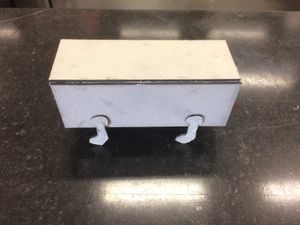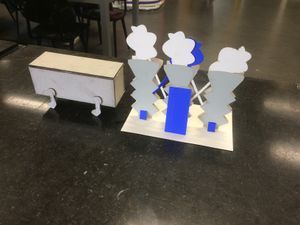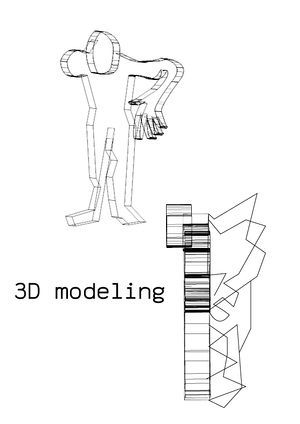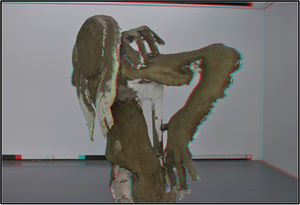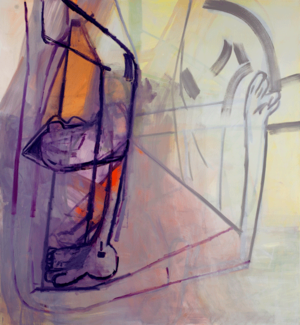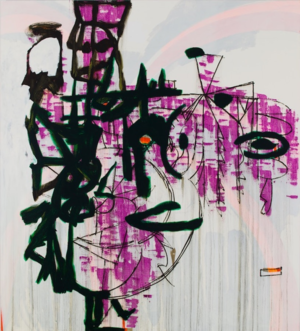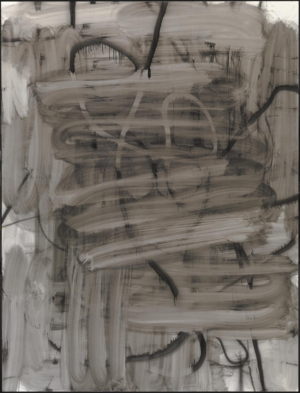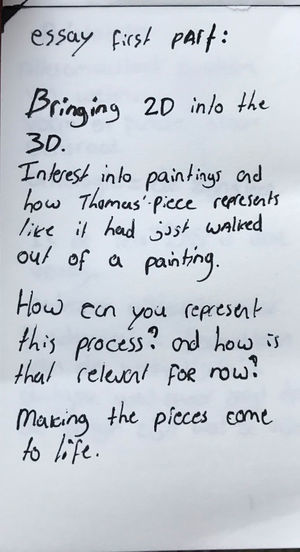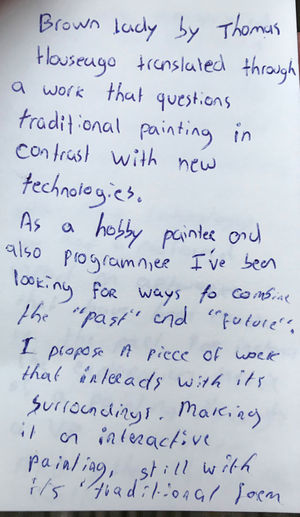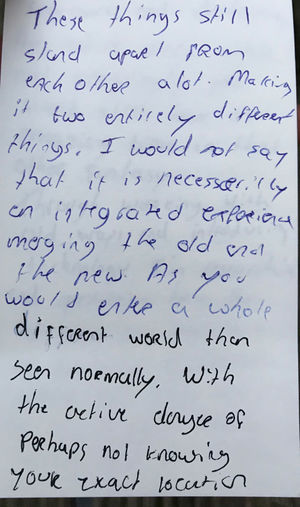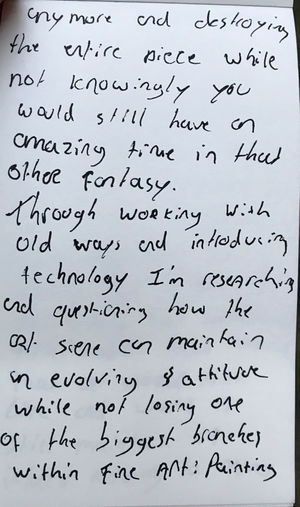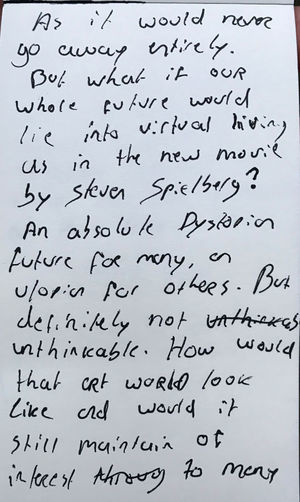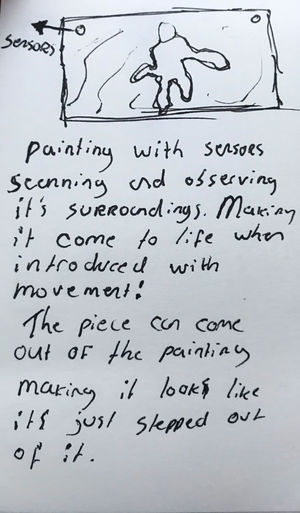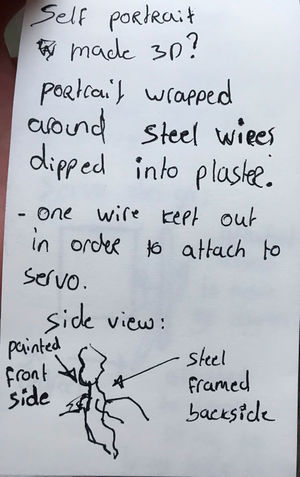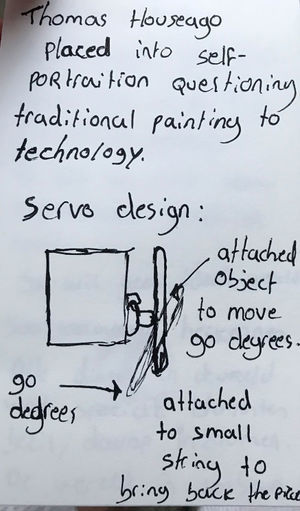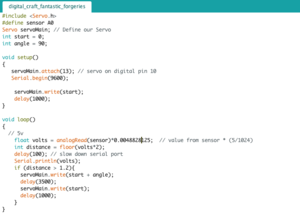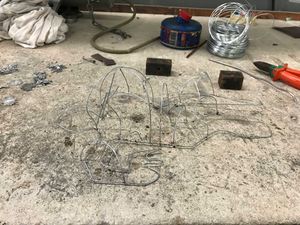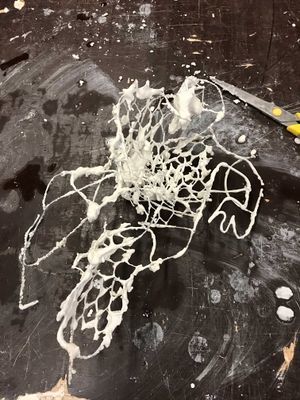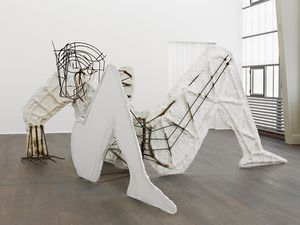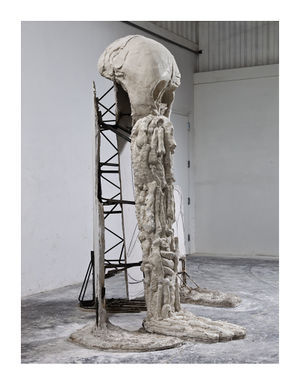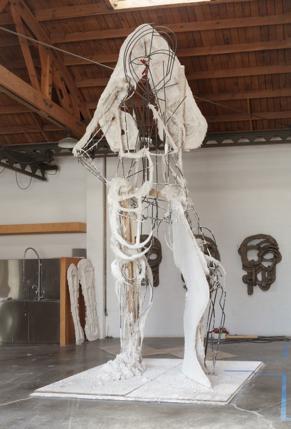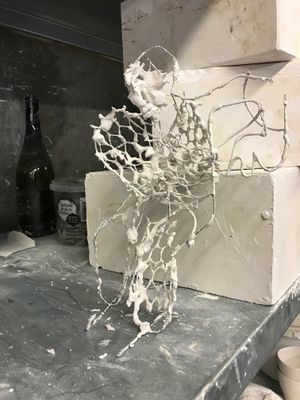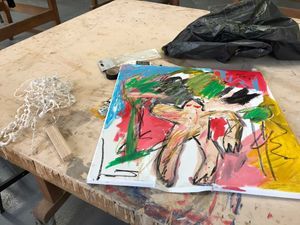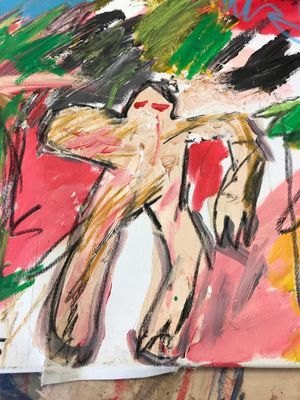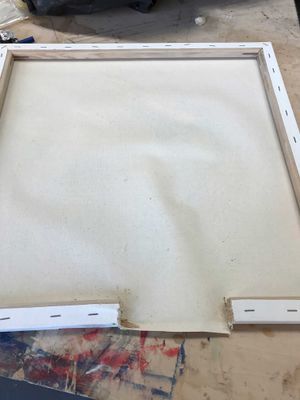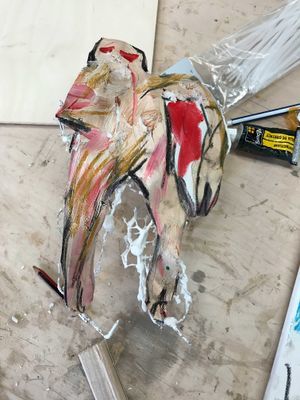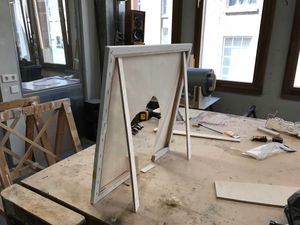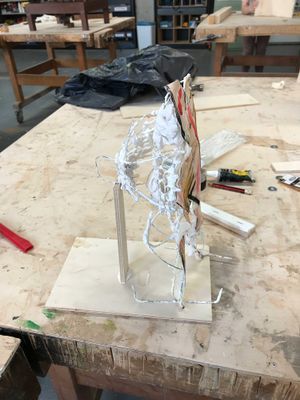Difference between revisions of "User:Timaeus"
| Line 159: | Line 159: | ||
[[File:tim-thomas-houseago.jpg|300px]] | [[File:tim-thomas-houseago.jpg|300px]] | ||
| − | [[File:tim-thomas- | + | [[File:tim-thomas-houseago2.jpg|300px]] |
| − | [[File:tim-thomas- | + | [[File:tim-thomas-houseago3.jpg|300px]] |
Revision as of 08:09, 10 May 2018
Contents
Starting point
Artwork: Brown lady by Thomas Houseago
I have chosen for the artwork the Brown lady because of the interest I have for paintings. I was fascinated about its form and resembled for me as of it just walked out of a painting.
First draft for the text/ hwat I wanted to do: I would like to appropriate this piece by it’s dis- and form for other artworks, in preciseness, paintings. What is the impact current technologies has on physique paintings? We are more and more surrounded by experimental technology and use these for paintings that have been made in the past. My focus is going to be on the human body, figurative work. What is the relation current technology has with the human body and how is this more explorable.
Mapping in lesson
Prototypes for others
== Martin Smith; tryptych in the form of vase no1 ==
For this prototype I had chosen the past, and asked myself a few what if questions. I started researching into tryptichs of the past and realised that this 'tryptych in the form of vase' is not really a whole. I saw the possibility to create a piece that was connected through the white space between the vases. What if the white space is used in order to create a tryptych that is connected with each other. By making wholes into the sides of the vases you could stick flowers through that would function as the connection between the phases. Where normally in the past this would happen by wood, it is now done by flowers.
== Donald Judd ; Untitled 1984
==
Daan said that he thought it was interesting that Donald Judd thought of his surroundings equally important in the end-result as of the piece itself. So I started brainstorming in this same mindset. In a future scenario the artwork might be alive. I made a prototype that was the same box as Donald Judd, but with movable legs. In this concept I made use of light and distance sensors, this in order to make his art piece find the best spot within it’s surroundings. By scanning everything around, he would gain data of the whereabouts of it’s viewers and the lighting of that particular moment. Taking these findings into consideration the box would expose itself in the best way possible, which would fit that moment of the day.
Essay/craft statement
I have always been fascinated by traditional painting, figurative and abstract in particular. While walking through the boymans museum, considering this assignment. A piece by Thomas Houseago stuck to my mind. It was as if it had just stepped out of an abstract figurative painting from artists like Willem de Kooning or Jean-Michel Basquiat. Artists I wanted to take as a main subject in the first place, but did not have the 3D aspect, as so much, in their work. Yet I still wanted to incorporate the painting process within this project. I am putting traditional painting, defined by it’s oil or acrilyc base on a 2D canvas/object, against the arrival of newer technology. I am interested in the impact both have on each other.
One way to use newer technology is to expand and use the art that have been around for centuries, different technology as for instance virtual reality has given us new ‘eyes’. One of the most-well known in this matter are the sunflowers by Vincent van Gogh. The paintings can be found all around the world, in Europe, Asia and the United States. They were recently never shown together in one place, but with the use of Virtual reality they were explorable all together, narrated by Willem van Gogh. This is very cool, yet not how I would imagine technology and painting to merge, in contemporary art of course. Many contemporary artists use technology within their frame of work. When traditional painters would use oil and brushes, they make use of media such as sound, video or computer rendered imagery. Digital art moved from simple patterns and shapes to the possibility to create paintings as realistic as the Mona Lisa. Modern technology provides the possibility to do work easier and quicker than ever before. As an example, you can buy a Van Gogh, 3D rendered and printed, for 200 dollars and you would probably never see the difference. That is another way to use newer technology incorporating traditional painting.
I still could not find the exact form of art I would consider the merge between technology and painting. At Tate modern, an exhibition in 2015 called Painting after Technology, I couldn’t find the coherence as well, while it’s title suggests differently. It’s main question contains the same interest I have; What effect has digital technology had on contemporary painting. Yet, why this subject still maintains my interest, also with a future perspective, is that they do not cleary show an immediate impact of the two of them working together. It’s curator Mark Godfrey, explains how it changed the painting process of the artists. How they are using for instance scanners, photo’s , ipads and smartphones. And goes on about the layerness within the paintings as we experience them as well on digital devices. However, they still maintain it’s traditional painting forms. Therefore, I am interested in literally combining the old form of painting and newer technology.
My starting point was the human figure, I was intrigued by its deformity and the aesthetic value it carried. Quickly I shifted my focus more towards the contrasting sides of new vs. old. Naturally, my process consisted of these two parts as well. On the one hand I painted, on the other I programmed, whereas in the end, both of these would merge into one piece. While keeping Thomas Houseago’s piece in the back of my mind, I think I fluidly came to the conclusion I wanted to let my figure walk out of it’s static form. Taking shape as a 3D transformed being. In order to achieve this, I researched into the process of Thomas. As seen on pictures of sculptures he uses steel bars as a base, whereafter he would use plaster to finish his projects. I used this same technique to appropriate the brown lady.
As of the programming I made use of an arduino, connected to a distance sensor and a servo. The reason for using a distance sensor came from a prototype I had made for Daan Kuyper. In this concept I made use of light and distance sensors, this in order to make his art piece find the best spot within it’s surroundings. By scanning everything around, he would gain data of the whereabouts of it’s viewers and the lighting of that particular moment. Taking these findings into consideration the box would expose itself in the best way possible, which would fit that moment of the day. I made use of this same idea and worked further from this. Interaction is a big part of my work, therefore I also wanted to make this interact with it’s surrounding. Using a dinstance sensor the ‘painting’ constantly receives a value based upon the movement that is happening in front of it. If its visitors would be intrigued by it’s form and come closer, the distance sensor would catch this change of value and react upon this by sending it’s newly acquired data to the servo. The distance sensor is programmed to react when exposed to movement within the range of two meters. If this value is reached, the servo motor pushes the 3D model out of the painting, entering a whole different world. The viewers are exposed to the sudden change of 2D into 3D and the interactivity the piece withholds.
By using, yet still respecting both art forms I think I have explored the possibilities of merging both worlds. I am questioning the future of oil and acrylic painting in a world where new technologies rise from the ground like grass. My craft lies in maintaining an art form that has been present since mankind while still embracing the possibilities our new society offers us.
Blue print/3-D model
Research
Some starting points I first had: cultural heritage and find comtemporary meaning
nothing to be found about the piece
it represents emptiness
how do lines become 3 dimentional
creation of monsters
texture map UV map 3d scanner casts of the body
data layering
I slowly moved from this to the idea of Digital versus Craft, How can a Craft be enhanced by Digital and not be forgotten.
In my first description of the piece by Thomas Houseago I also said that I liked it because it just could have walked out of a painting. And that has been stuck to my mind throughout the process, leading eventually to the piece literally moving out of it's context through movement. I looked into the style of what painting it could have come out to. And because it's still somewhat unfinished look and raw forms, I had chosen for the abstract-expressionism / neo-expressionism. Taking paintings like Willem de Kooning's woman and jean michel basquiat as a main inspiration source.
moving from analog art to digital art ;; For how long will the physical painting be alive?
Technology on the impact of traditional figurative painting. They have been too far from one another. Either it has been solely digital and 3d or it has been only oil or acrilyc based paintings.
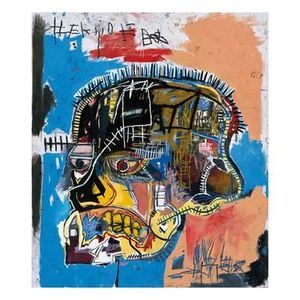
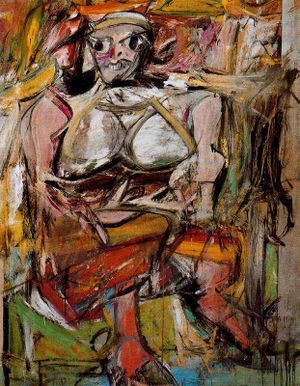
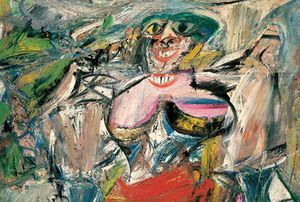
Many modern artists use high technology equipment in their works. Whereas traditionally artists used a pencil or brush to make beautiful works of art, artists in the early twenty-first century are now using sound, video or computer generated images. Digital art developed from simple patterns and shapes made using computer programs to finished works of art which can look as realistic as a watercolour or oil painting. Modern art exhibitions often include more videos and installations than traditional painting or drawings. Even artists which use traditional techniques increasingly use modern technology such as the internet to display their works and communicate with other artists. Modern technology provides a means for artists to create works faster with more tools than ever before. I will be discussing the impact of some of these technologies in relation to the art of some modern artists. I will argue that modern technology such as the computer and video is another tool for an artist to use in their work. Source: https://www.ukessays.com/essays/arts/impact-if-technology-on-art-art-essay.php
In the different ways that technology and painting have been combined, it is often that technology completely takes over the role of the painting/painter. Contemporary examples are layered 3D printing of paintings that look 1 of 1. Another is painting in Virtual Reality and how we can use Virtual reality for exhibitions.
Here are some examples:
The sunflowers by Vincent van Gogh that are all around the world, now brought together all in one space through VR:

Different layers of 3D printing a classic van Gogh painting
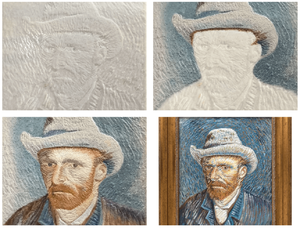
Within all these new technologies and possibilities painters have to ask themselves; what kind of attention do we bring about the experience of a painting? How Do you make that moment different and special from images that we see on the screen.
Even at Tate modern, at an exhibition in 2015 called Painting after Technology, there is no coherence between traditional and modern/futuristic. It’s main question contains the same interest I have; What effect has digital technology had on contemporary painting. Yet why it still maintains my interest, also with a future perspective, is that they do not cleary show an immediate impact of the two of them working together. It’s curator Mark Godfrey, explains how it changed the painting process of the artists. How they are using for instance scanners, photo’s , ipads and smartphones. And goes on about the layerness within the paintings as we experience them as well on digital devices.
But as seen below; these paintings still maintain a traditional form.
Notes
Process pictures
As of the programming I made use of an arduino, connected to a distance sensor and a servo. The reason for using a distance sensor came from a prototype I had made for Daan Kuyper. In this concept I made use of light and distance sensors, this in order to make his art piece find the best spot within it’s surroundings. By scanning everything around, he would gain data of the whereabouts of it’s viewers and the lighting of that particular moment. Taking these findings into consideration the box would expose itself in the best way possible, which would fit that moment of the day. I made use of this same idea and worked further from this.
I started making a 3D model to come out of the painting, I made use of a steel base that would form it's entire body, modeled after the original and the sketches previously made. After that I covered everything in plaster to give it more roughness and a thicker substance. The reason for this came out of research of the working methods of Thomas Houseago, who uses steel as a base first and then works with another material, mostly plaster to give it a real body. ]
